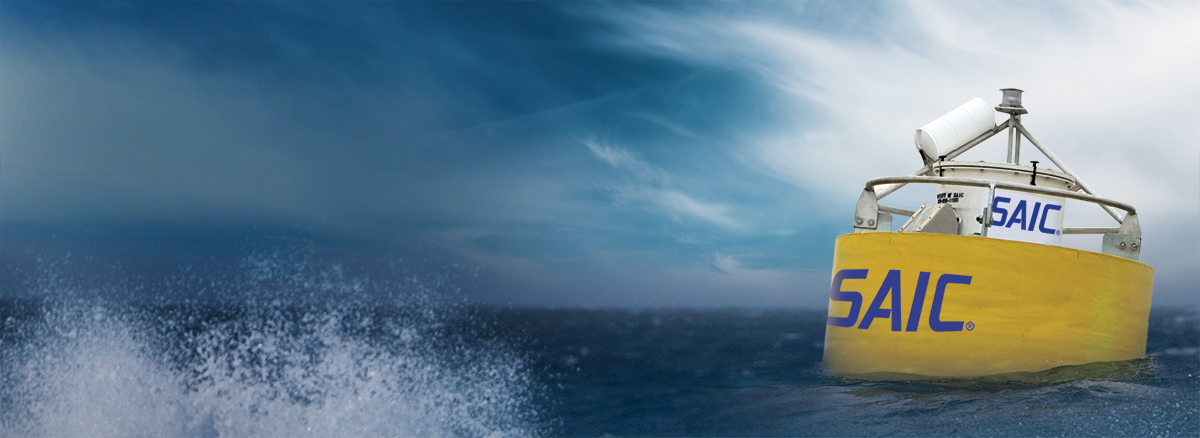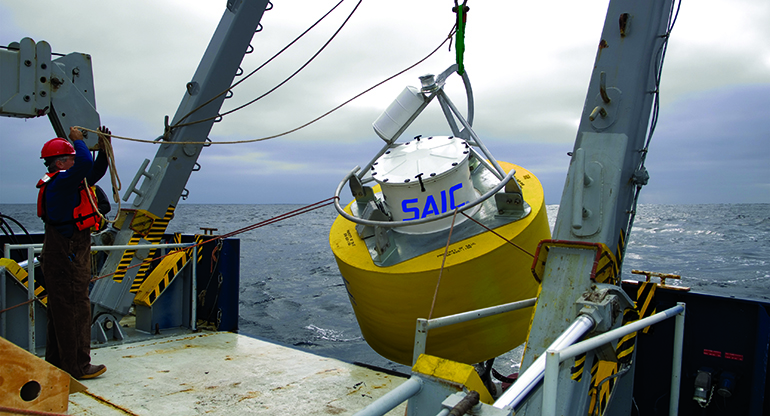Oceanic data collection aids emergency preparedness
Early detection of tsunamis helps public safety authorities direct coastal populations out of harm’s way, saving countless lives around the world from ocean waves that can be 100 feet high.
For more than a decade, SAIC has been building deep-sea sensor buoys that continuously record and transmit oceanic measurements for use in forecasting and alerts.
We’ve deployed over 45 observational buoy systems for nation-state customers that include Australia, Chile, China, India, Japan, Russia, Taiwan, and Thailand—vulnerable countries along the seismically active Pacific Rim.
Vigilance in monitoring conditions
The countries use seawater temperature and pressure readings collected by our buoys for calculations of water height above the sea floor.
The buoys make measurements in near real time and typically transmit data reports via satellite every few hours; during tsunami events, the frequency of transmissions is higher.
This vital information contributes to the estimation of impacts and planning of evacuations.
The buoys use tsunameter technology licensed from the National Oceanic and Atmospheric Administration (NOAA) and are enhanced versions of NOAA’s own buoys. In turn, the agency has acquired our buoys.
The buoys are several generations mature, with more advanced components and greater robustness to reliably provide high-resolution measurements. SAIC continues to collaborate with NOAA in their ongoing development.
Important work to make the world safe
Around 85 percent of all commercially deployed buoys are from SAIC. At a 17,000-square-foot facility in Poway, California, our team builds these systems that must work in some of the globe’s roughest open waters.
Team members perform oceanographic reviews of potential buoy deployment sites, coordinate with NOAA, and monitor deployed systems. Some go out to sea for months at a time to deploy or recover systems that need reconditioning.
Our work is a critical piece of larger scale efforts to prevent tragedies like the 2004 Indian Ocean tsunami that claimed almost 228,000 lives in 14 countries.

